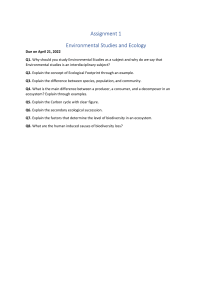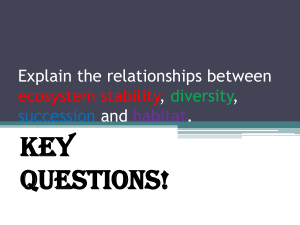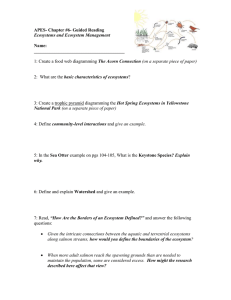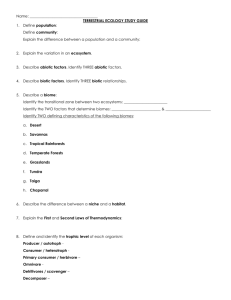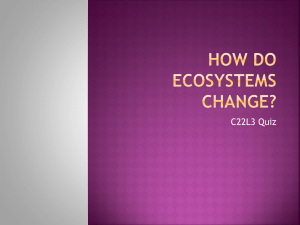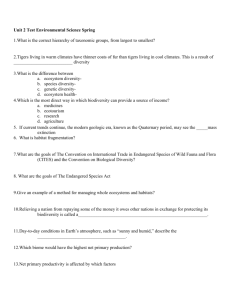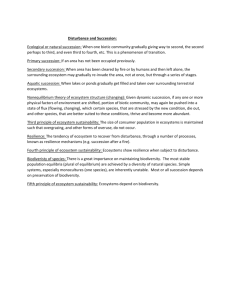TERRESTRIAL ECOLOGY STUDY GUIDE
advertisement
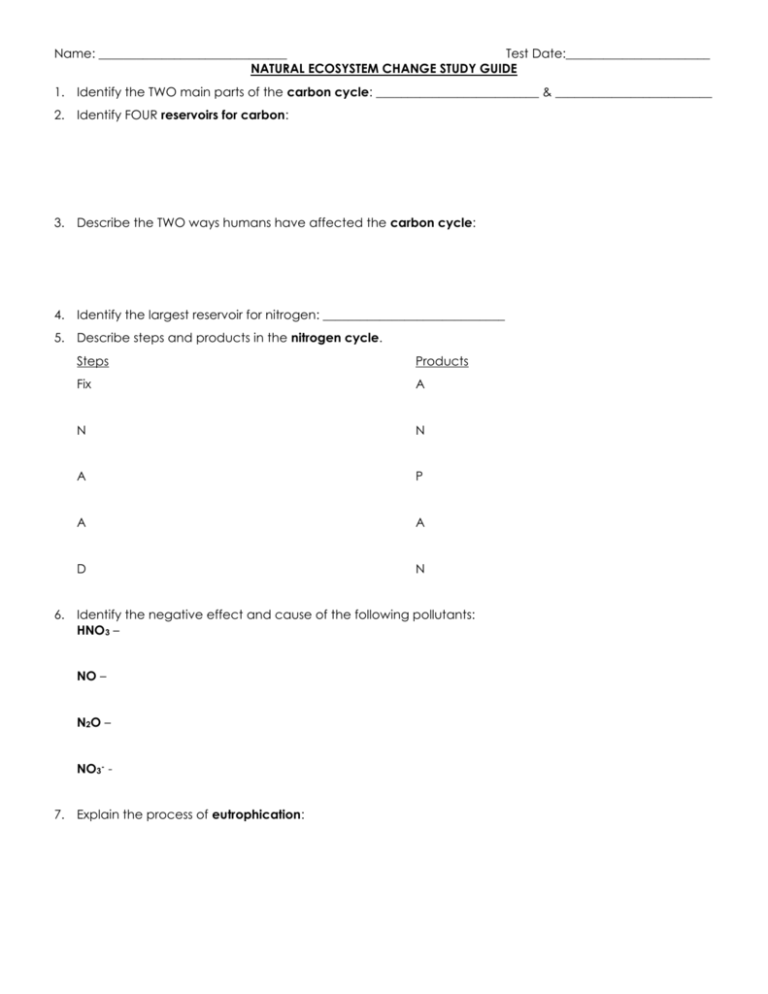
Name: ______________________________ Test Date:_______________________ NATURAL ECOSYSTEM CHANGE STUDY GUIDE 1. Identify the TWO main parts of the carbon cycle: __________________________ & _________________________ 2. Identify FOUR reservoirs for carbon: 3. Describe the TWO ways humans have affected the carbon cycle: 4. Identify the largest reservoir for nitrogen: _____________________________ 5. Describe steps and products in the nitrogen cycle. Steps Products Fix A N N A P A A D N 6. Identify the negative effect and cause of the following pollutants: HNO3 – NO – N2O – NO3- 7. Explain the process of eutrophication: 8. Identify TWO characteristics of oligotrophic waterways: 9. Does the phosphorous cycle have a gas phase? ________ What type of cycle? _________________________ Describe the phosphorous cycle. 10. Identify TWO human activities that release large amounts of sulfur to affect the sulfur cycle: 11. Describe the hydrologic cycle. 12. Water by the Numbers: % of the Earth covered by water: _________________________ Of all the water on the planet there is: _________% saltwater ______% polar ice caps / glaciers ________% freshwater _______% water in lakes / rivers (surface water): Identify the largest lake: _________________________ Identify the largest aquifer: _________________________ 13. Describe groundwater/aquifers and the recharge rate as well as the water table: 14. Identify TWO abiotic and TWO biotic factors that affect aquatic ecosystems: 15. Describe TWO ecosystem services provided by the ocean: 16. Identify THREE possible explanations for sea level rise: 17. Discuss why an upwelling, turnover, or thermocline are ecologically important in aquatic ecosystems: 18. Define indicator species: Describe why an indicator species important in understanding aquatic ecosystems: 19. Describe the environmental importance of keystone species. Identify THREE examples of keystone species. 20. Describe the ecological significance of the predator-prey cycle: 21. Identify THREE ecosystem services and explain how the service benefits human society. 22. Define ecological succession: Climax Community: Primary Succession: Secondary Succession: 23. Explain the connection between biodiversity and stability: 24. Describe inertia and resilience 25. Identify and describe the TWO types of diversity systems: a. b. 26. Describe the method of using a biodiversity index:
